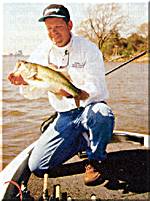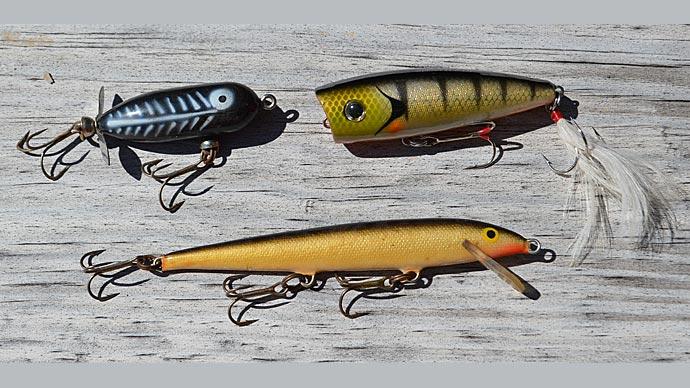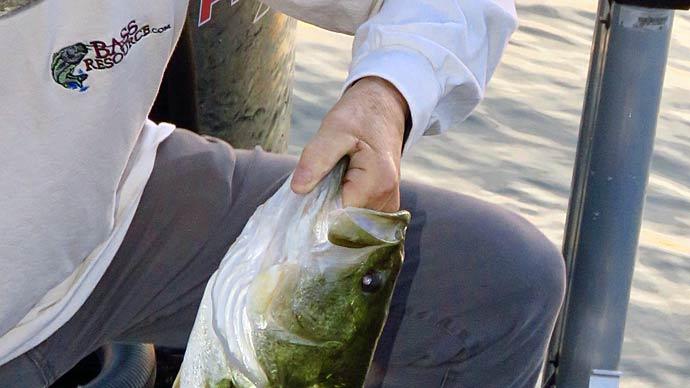
In the middle 70s, my fishing partner and friend Merrion Coble and I won the first Buchanan Bass Busters Invitational tournament on Lake Buchanan. We were proud of this feat as we bested some of the finest anglers from central and south Texas. Glen Hayden, Jackie Hewlett, and Johnny Mayes were just a few of the great names fishing this inaugural tournament. Even more satisfying was repeating it the following year.
My reason for relating our good fortune is certainly not about bragging rights - no, it's indirectly related to our story - buzzbait history. As most anglers know, my absolute faith and confidence in the spinnerbait have gained my fishing reputation. So, let me tell you how we managed to win these tournaments back to back.
The river portion of Big Buck has always been good to me and my spinnerbaits. Surface lures also produced well, so we decided to stick around the Tow area and the waters north and west of Garrett Island. These areas had loads of driftwood log jams. In our pre-fish period, we did fair, but my partner tied on a Herb's Dilly and we hit pay dirt! The same log jam that kept hanging up our spinnerbaits was no match for the in-line designed spinnerbait. Bass couldn't resist the soft-purring sound produced by the wing-shaped blade that gave lift to the lure and eliminated many hang-ups. They would dart out of the shadows and hit the lure so hard you'd nearly lose your rod. The excitement in this has not changed, even today.
These strikes make our strike/catch ratio extremely high simply because the fish came out of the thick cover and ate the bait. This pattern carried over to the next year and allowed us another win.
This was my first experience with a buzz-type lure, and I've been hooked ever since. The only buzzing I'd done before this was with my trusty spinnerbait. I found that rigging a half-ounce Sneaky Pete with a single #6 Colorado blade and retrieving it fast enough over cover to create a bulging 'V' wake would often get some great results.
Most anglers like to fish prop-type baits such as Devil's Horse, Skip Jack, Tiny Torpedo, or Wood Chopper. But how many of you have been working these lures around logs, stumps, or rocks without getting hit, only to have a bass bust it on a fast retrieve to the boat to make another cast? Exciting, wasn't it? In my humble opinion, I believe today's buzzbaits all evolved from the experiences listed and probably many more.
The first, and probably the most popular, buzzbait ever was the Lunker Lure. You simply didn't get on the water without one tied on. My gracious, how they caught bass! And why not? It was practically hang-up proof and nearly indestructible. You could fish it over and over in any cover bass might inhabit.
One of the buzzbait's most unique features was the "left-hand track" of the lure on the retrieve. Anglers became adept in making the bait bump structure such as fence posts, tree trunks, etc.
Here are some buzzbaits tips that have stood the test of time and made buzzbait fishing even more productive. First, a stinger hook is simply a must. You'll increase your hooking ratio tremendously. Assorted "trailers" added do not seem to enhance the lure, but adding a "clacker" on the blade arm has proven to be most effective. The clattering sound mimics feeding baitfish and will draw those sluggish old fish to hit it.
Today's tackle shelves feature lots of buzzbaits, all of which offer design innovations that the manufacturer wants to claim make them the very best. Do you know something? I've tried them all, and I've yet to find one I didn't like. They will catch bass just as long as they put out that unique gurgling, clattering sound.
Blade size can be important. I like small single blades for calm or quiet water, but give me a big ol' triple-wing blade with a clacker attachment for choppy waters. Blue Fox makes one with two triple blades on a yoke that sounds off.
Even today, learning to control the speed of retrieval is the biggest problem. And the key to successful buzzbait fishing is the retrieve speed. Slow to medium always seems to be the most productive for most anglers. However, varying the retrieve speed often excites the bass into hitting it.
If you want to put an actual "mouse squeak" in your buzzbait, remove the rear clevis that the blade rides on. Now, use a slightly oversized bit and open the clevis hole just a little larger than the wire it rides on. You will be amazed at how loud it will squeal.
Rod selection is one of the most important considerations that will enhance your buzzbait fishing experience. Remember this, a buzzbait is a surface lure, and as the old saying goes - don't set the hook until you feel the pull. I'm a confirmed "braid" angler. I can't tell you how many good fish I missed on a buzzbait simply because of the extreme sensitivity of today's rods on the hookset. A few of my friends said they finally found more hooking success by switching to a softer action - either composite or fiberglass worked well. So, I tried a composite rod, which made a difference. If you don't want to make this change, do this. Don't look at your lure on the retrieve. It will make a difference.




